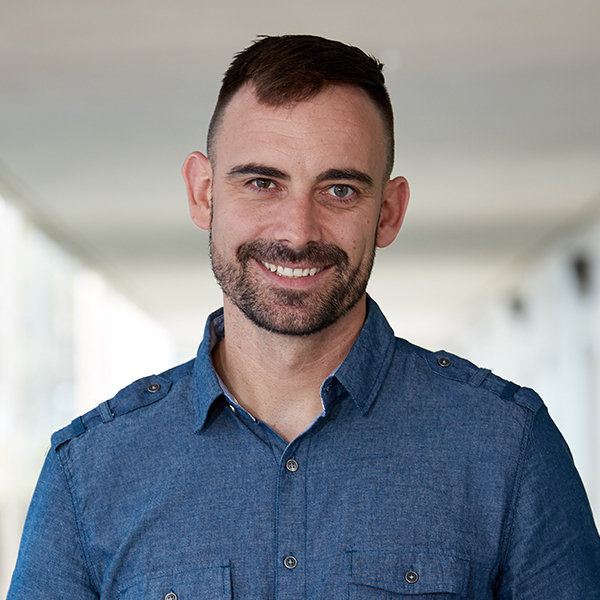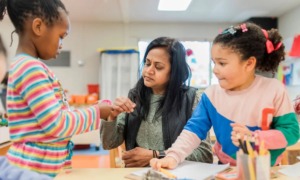
ImagePointFr/Shutterstock
.
Benjamin Franklin once said; “An ounce of prevention is worth a pound of cure.” Nowhere is this axiom truer than in the field of children’s mental health. My years of education, training and experience as a school-based clinical social worker at The Guidance Center, working with children, their families and educators, has led me to realize the value of a trauma-informed lens.
This means I have an understanding of how the brain forms and functions in relation to the environment, and that many psychological, emotional, cognitive and behavioral impairments are directly related to early life traumas, stressors or adversity. It also means that I view these impairments not as the problem, but as symptoms of the real problem: a brain that has been shaped by its environment to be very stress reactive.

Nathan Swaringen
According to neuroscientist and pediatric psychiatrist Dr. Bruce Perry of the ChildTrauma Academy, the human brain is use-dependent. In other words, for the most part it becomes a reflection of what it has experienced. To learn language, the area of the brain for processing language must be stimulated by experiencing speech. To learn empathy, love and kindness, the brain must experience empathy, love and kindness. The list goes on and on.
Most of these neural processes are taking place incredibly early in life, even in utero. The billions of neural connections being formed every day early in life are occurring exponentially more rapidly from conception to approximately age 5. Our brains are malleable throughout the lifespan, but nowhere near as much as those critical first few years.
What most take for granted is that although this neurological sponginess of our brains early in life allows us to rapidly acquire language, fine and gross motor skills, toilet training and thousands of other learned traits by the time we’re 5 years old, this same sponginess actually makes younger children more at risk for trauma and developing a stress-reactive brain. If the younger brain is spongier for the good, it’s also spongier for the bad.
Being too young to understand or remember is irrelevant. Why? Because trauma is not in our cognition, it is in our nervous system, according to Dr. Peter Levine, and Dr. Bessel Van Der Kolk. Trauma changes the way the nervous system interprets and reacts to the sensory information it gathers from the world, completely independent of conscious memory. Educators can often see this outwardly expressed as disruptive behaviors in the classroom. Early intervention is crucial to changing that pattern, yet often overlooked.
Since the rapidly developing immature brain is most malleable earlier in life, it makes the most sense to focus our healing interventions and resources targeted at this population. This is an overlooked component of what it means to be trauma-informed. One must understand the prevalence and impact of trauma on society, especially its youth; but to miss the necessity of early intervention is an egregious oversight. Intervention at the toddler and preschool level should lead to exponentially better mental health outcomes. The brain develops sequentially; core regulatory nervous system functioning first, social emotional functioning next and logical abstract reasoning last. When the foundation is poorly organized due to trauma, a cascade of atypical development follows. If the foundation is remedied early, healthy brain development will follow.
It may not look revolutionary
Launched at the beginning of the 2016-17 academic year, It’s About T.I.M.E. (Trauma-Informed Movement in Education) is a training program on the trauma-informed approach based on ChildTrauma Academy’s Neurosequential Model in Education. The program, which builds on the foundation created by established support systems within Long Beach (Calif.) Unified School District (LBUSD) schools, brings that approach to educators through formal training at the start of the school year and onsite support throughout the year. As developer of It’s About T.I.M.E., I’m proud of the work we’ve accomplished at two LBUSD high schools: Beach High School and Poly Academy of Achievers and Leaders High School (PAAL). With the collaboration of the California Conference for Equality and Justice’s restorative justice model, and various other community-based programs, we’ve seen 53 percent and 64 percent decreases in suspensions at Beach and PAAL, respectively.
Adolescence is still relatively early intervention, but the greatest neuroplasticity and opportunity for healing is much younger. That is why It’s About T.I.M.E. has expanded its focus to preschool. In the past year, It’s About T.I.M.E. has provided training and consultation to Educare of Los Angeles at Long Beach preschool programs with great results. The trauma-informed approach complements both preschool programs’ already established student support systems, like its dedicated family support staff and Conscious Discipline teaching model.
Educare serves a very high-needs, trauma-impacted population, presenting a variety of challenges for staff every day. Presenting learning-readiness academic curriculum balanced with maintaining order and structure in the classroom is at times exhausting. The amount of trauma endured and subsequently re-enacted by some of these very young children and toddlers can be shocking to witness. The trauma-informed approach, which may seem like a counter-cultural response to traditional views on discipline, is crucial for both young children and their educators to create a healing classroom environment where everyone can thrive.
The trauma-informed approach in action at a preschool setting looks like an educator viewing a hurting child’s challenging behavior with an understanding of the underlying cause, which is always emotional dysregulation. Then figuring out ways to provide safe, nurturing and sensory-regulating interactions for that child.
Often, this looks like nurturing, affectionate soothing of a dysregulated child rather than punishing or scolding. It also looks like integrating singing, dancing, marching, clapping, Play Doh, slime, sand, water or bubbles — activities that can be easily incorporated into any classroom environment — to proactively regulate sensitive little brains with very narrow windows of stress tolerance. On paper, this approach may not sound revolutionary, but the impact of even just one trusted adult in a child’s life consistently responding this way is scientifically proven to heal their brain.
I’ve experienced this impact already at Educare. The Educare staff is amazing! Their level of teaching skill, professionalism, love and patience with these hurting children is unmatched. Every week when I visit the Educare campus, I see such growth and progress in the children.
A child who at the start of the school year would attack others indiscriminately and tantrum to the point of vomiting when told “no,” was seen recently soothing and caring for a tiny younger girl who had been hurt. When he saw me walk by the playground, he screamed with excitement trying to climb the fence to get to me. After a brief greeting and high fives through the bars of the fence, he accepted the limit that I’d play with him later with a mild whine, but “OK” rather than a tantrum. During pick-up at the end of the day, his large and intimidating-looking father, once guarded and standoffish, now has a more trusting relationship with his son’s teacher. He laments to her how he wishes he was hugged more as a little boy.
These are examples of an ounce of prevention at work. We must focus our efforts of saving lives and healing brains when they are the most receptive to healing — early.
Nathan Swaringen, LCSW, is the developer and lead of It’s About T.I.ME. and a clinical therapist of more than 10 years at The Guidance Center, a nonprofit child and family mental health agency headquartered in Long Beach, Calif.






























